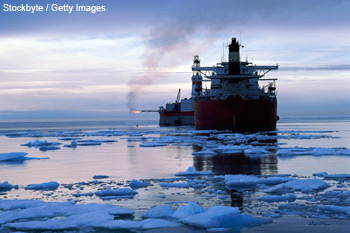Potential Elements of an UNCLOS Implementing Agreement
The high seas and the Area of the deep seabed (Areas Beyond National Jurisdiction or ABNJ) contain perhaps the largest reservoir of biodiversity left on Earth. But as our technological capacity and demand for resources have grown, the human footprint on the ocean has expanded. Today, the oceans are under enormous pressure from stressors including fishing, habitat destruction, climate change, ocean acidification and pollution. However, the rules and regulations and institutional governance structures for the conservation and sustainable use of marine biodiversity have not kept pace with these developments. This is particularly true of the overarching legal framework for all maritime areas – the 1982 United Nations Convention on the Law of the Sea (UNCLOS).

The management challenges relating to ocean resources have evolved in ways that never could have been imagined when UNCLOS was negotiated in the 1970s. Fishing fleets have grown larger and more efficient, driving the percentage of fish stock considered to be fully exploited, overexploited, depleted or recovering from depletion to 85%. Overexploited and depleted stocks constitute some 32%, up from only 10% in the 1970s. Technological advances have opened previously inaccessible regions of the deep sea to exploration and exploitation. Scientific advances have also paved the way for the potential development of pharmaceutical, cosmetic and nutraceutical uses of marine genetic resources.
Recent decades have also seen the development of new standards of environmental planning and decision-making. These include the precautionary principle— embodied in Principle 15 of the 1992 Rio Declaration—and the ecosystem approach—incorporated in many recent environmental agreements, including the 1995 Fish Stocks Agreement and the 2002 Johannesburg Plan of Implementation. Marine protected areas (MPAs), strategic environmental assessments (SEA) and environmental impact assessments (EIA) have likewise been acknowledged as crucial tools for protecting marine biodiversity and managing human impacts on marine ecosystems, yet there is no structure for applying these tools in ABNJ. This is exacerbated by the lack of regional bodies mandated to promote conservation in most parts of the ocean.
Endorsing recommendations by the ad hoc working group known as BBNJ, the United Nations General Assembly in December 2011 agreed to convene a process to ensure that the legal framework under UNCLOS effectively addresses the conservation and sustainable use of marine biodiversity in ABNJ. One way forward is the negotiation of a multilateral agreement under UNCLOS: a so-called 'Implementing Agreement.' The process could address the conservation and sustainable use of marine biodiversity in ABNJ, including:
- Area based-management tools, including MPAs;
- Marine genetic resources, including questions related to the sharing of benefits;
- Environmental impact assessments;
- Capacity-building; and
- Transfer of technology.
The following document sets out the potential elements of such an Implementing Agreement. Taken together, these elements provide a framework for the conservation and management of biodiversity in ABNJ that would go a long way in addressing current gaps in ocean governance.






